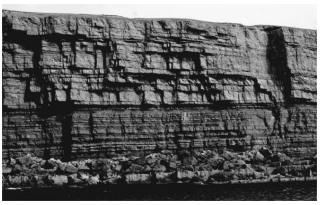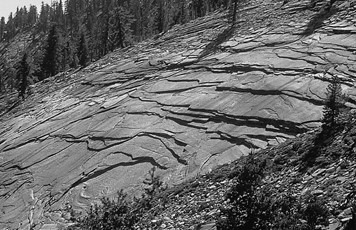Interlude B for exam i guyes
1/21
There's no tags or description
Looks like no tags are added yet.
Name | Mastery | Learn | Test | Matching | Spaced |
|---|
No study sessions yet.
22 Terms
Which of the following best describes the term sediment?
loose fragments of rocks and minerals broken off bedrock or precipitated from water
The accumulation of sediments that are found on top of the Earth's bedrock is known as
cover
Sediment formation is the result of __________ at the Earth's surface.
weathering
Why does physical weathering speed up the processes of chemical weathering?
Physical weathering produces more surface area for chemical weathering to attack.
Weathering results in
smaller, more-rounded pieces.
Why does differential weathering occur?
Different minerals have different resistances to weathering.

The following is a picture of what type of phenomenon?
jointing

What type of weathering has produced the honeycomb-like features shown in the following photo?
salt wedging

What type of weathering has created the onion-like layers in the rocks in the picture?
jointing
Which of the following is a type of physical weathering?
rocks breaking apart into smaller pieces along joints and other fractures
What type of weathering are you most likely to find occurring in areas with cold climates?
frost wedging
What type of weathering are you most likely to find occurring near an ocean?
salt wedging
Chemical weathering involves the breakdown of material due to
interaction with water or air.
Dissolution occurs when minerals
are dissolved into water.
Hydration occurs when minerals
absorb water and expand.
Which type of weathering process is happening to materials when they rust?
oxidation
Which types of minerals are most likely to experience oxidation during chemical weathering?
iron minerals such as biotite and pyrite
The zone of leaching is the area in which
minerals are dissolved and removed from soil.
The Dust Bowl of the 1930s is an example of what hazard to soils and the roles they play in society?
soil erosion
Climate, substrate, slope, time, and organisms are all factors that influence
soil formation
Differential weathering occurs when
some parts of a rock weather at different rates than others